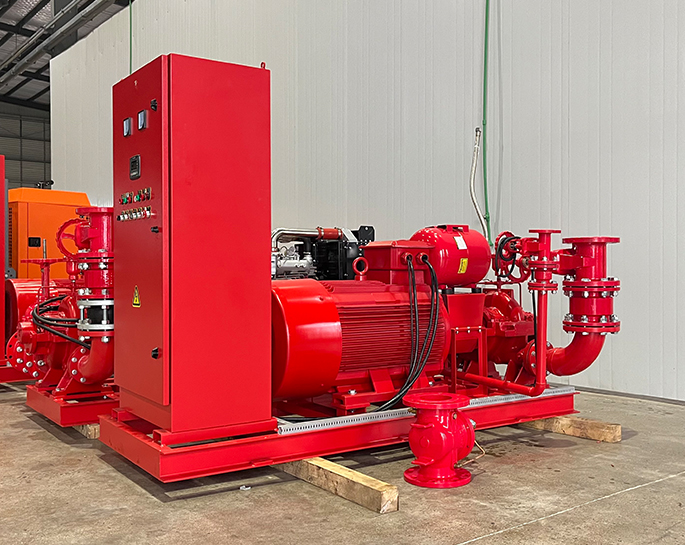How to order valves correctly?
Dec 08, 2023
Share:
Ordering valves correctly is crucial to ensure that you receive the right type, size, and specifications for your specific application. Here are steps to help you order valves correctly:
1. **Understand Your Application:**
- Identify the purpose of the valve (e.g., isolation, regulation, control).
- Determine the type of fluid (liquid, gas) and its characteristics (temperature, pressure, corrosiveness).
- Consider the flow rate and the required valve capacity.
2. **Valve Type:**
- Choose the appropriate valve type based on your application (e.g., ball valve, gate valve, globe valve, check valve).
- Consider factors like the valve's ability to provide tight shut-off, control flow, or allow one-way flow.
3. **Material Selection:**
- Select materials based on the fluid properties and environmental conditions.
- Consider factors such as corrosion resistance, temperature resistance, and compatibility with the medium.
4. **Size and Pressure Class:**
- Determine the required valve size based on the pipe diameter and flow rate.
- Specify the pressure class or pressure rating needed for your application.
5. **End Connections:**
- Choose the appropriate end connections (e.g., threaded, flanged, welded) based on your piping system and installation requirements.
6. **Valve Actuation:**
- Decide whether manual or automated (actuated) valves are needed. If automated, specify the type of actuator (electric, pneumatic, hydraulic).
7. **Special Features:**
- Identify any special features required, such as emergency shut-off, fire-safe design, or low emission capabilities.
8. **Standards and Certifications:**
- Ensure that the valves meet relevant industry standards and certifications (e.g., API, ANSI, ISO).
- Check for compliance with safety and environmental regulations.
9. **Quantity and Spare Parts:**
- Determine the quantity of valves needed for your project.
- Consider ordering spare parts for maintenance purposes.
10. **Vendor Selection:**
- Choose a reputable and reliable valve supplier or manufacturer.
- Check the supplier's reputation for quality products, on-time delivery, and customer support.
11. **Review Specifications:**
- Double-check your specifications and requirements before placing the order.
- Ensure that the order includes all necessary details, such as valve type, size, material, and any special features.
12. **Provide Application Details:**
- Communicate any specific details about your application to the supplier, such as temperature extremes, corrosive conditions, or other factors that may impact valve performance.
13. **Request Documentation:**
- Ask for technical documentation, including datasheets, manuals, and certifications, to ensure that the valves meet your specifications.
14. **Ordering Process:**
- Follow the supplier's ordering process, providing all required information.
- Obtain a confirmation of the order, including delivery dates and payment terms.
By following these steps, you can ensure that you order valves that meet the specific requirements of your application and adhere to industry standards. If in doubt, consult with a valve expert or engineer for assistance in selecting the right valves for your needs.

1. **Understand Your Application:**
- Identify the purpose of the valve (e.g., isolation, regulation, control).
- Determine the type of fluid (liquid, gas) and its characteristics (temperature, pressure, corrosiveness).
- Consider the flow rate and the required valve capacity.
2. **Valve Type:**
- Choose the appropriate valve type based on your application (e.g., ball valve, gate valve, globe valve, check valve).
- Consider factors like the valve's ability to provide tight shut-off, control flow, or allow one-way flow.
3. **Material Selection:**
- Select materials based on the fluid properties and environmental conditions.
- Consider factors such as corrosion resistance, temperature resistance, and compatibility with the medium.
4. **Size and Pressure Class:**
- Determine the required valve size based on the pipe diameter and flow rate.
- Specify the pressure class or pressure rating needed for your application.
5. **End Connections:**
- Choose the appropriate end connections (e.g., threaded, flanged, welded) based on your piping system and installation requirements.
6. **Valve Actuation:**
- Decide whether manual or automated (actuated) valves are needed. If automated, specify the type of actuator (electric, pneumatic, hydraulic).
7. **Special Features:**
- Identify any special features required, such as emergency shut-off, fire-safe design, or low emission capabilities.
8. **Standards and Certifications:**
- Ensure that the valves meet relevant industry standards and certifications (e.g., API, ANSI, ISO).
- Check for compliance with safety and environmental regulations.
9. **Quantity and Spare Parts:**
- Determine the quantity of valves needed for your project.
- Consider ordering spare parts for maintenance purposes.
10. **Vendor Selection:**
- Choose a reputable and reliable valve supplier or manufacturer.
- Check the supplier's reputation for quality products, on-time delivery, and customer support.
11. **Review Specifications:**
- Double-check your specifications and requirements before placing the order.
- Ensure that the order includes all necessary details, such as valve type, size, material, and any special features.
12. **Provide Application Details:**
- Communicate any specific details about your application to the supplier, such as temperature extremes, corrosive conditions, or other factors that may impact valve performance.
13. **Request Documentation:**
- Ask for technical documentation, including datasheets, manuals, and certifications, to ensure that the valves meet your specifications.
14. **Ordering Process:**
- Follow the supplier's ordering process, providing all required information.
- Obtain a confirmation of the order, including delivery dates and payment terms.
By following these steps, you can ensure that you order valves that meet the specific requirements of your application and adhere to industry standards. If in doubt, consult with a valve expert or engineer for assistance in selecting the right valves for your needs.


.png)
.png)

.png)


